TRANSGREEN - Otmar. Or how a lynx gets his name
27-09-2018
Naming a lynx may take months. A winding path to identifying a new inhabitant of the Beskydy Mountains
A story by JIŘÍ LABUDA, monitoring expert for Friends of the Earth, Olomuc branch, Czech Republic
Last year was not easy for the Beskydy lynx. In addition to natural threats they face, human actions were confirmed to be behind the death of at least two lynx in short space of time. Unfortunately, on both occasions, the victims were mothers (females Laura and Lenka) with young cubs. Following these losses suffered by an already fragile Beskydy lynx population, I felt rather skeptical as another monitoring season was about to start in autumn 2017. I expected that finding lynx tracks in the wider Moravian-Silesian Beskydy area would require a large dose of luck.
November 16th, 2017. So what is it that I find so attractive about the monitoring of large carnivores? One can never be sure of anything and there is never a shortage of surprises. Of this, I was reminded again as the first snow of the winter fell on 16 November 2017. I chose my route that day mainly for the views of the countryside that it offered and based on my intuition rather than any rational plans. Something was calling me to that particular place. And I was rewarded for my spontaneous decision: to my great surprise, I found a clear lynx trail which led me, after a mere 200 meters, to a kill. Something – almost certainly a lynx – had hidden the remains of a hare in the snow. Only the hind legs were sticking out. Ideal place for camera trapping, I thought! I returned the very next day to install the camera trap in the hope that the lynx would return to finish its meal and reveal some more of its secrets!
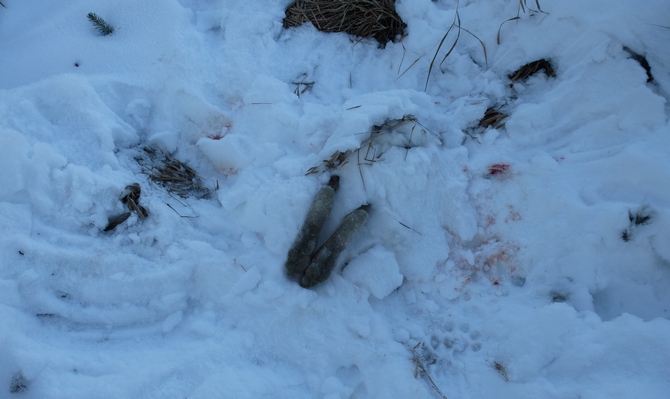
[A hare killed by a lynx and covered with snow to hide it from possible competitors. Photo taken on 16 November 2017]
At home, I wondered which of the lynx already known to us could have caught the hare. The area where I found the kill had been visited by lynx only sporadically in the previous years; in some monitoring seasons, there were no signs at all. On the rare occasions when a lynx was recorded here, it was often one of the offspring of the female Draža who used to occupy this territory in the past. I, therefore, attributed the latest finding to one of her descendants, now fully grown. The absence of the permanent lynx occupation is in contrast with the fact that the region in question, the northeastern part of the Beskydy Protected Landscape Area, appears in every respect ideal for lynx – be it in terms of terrain, forest cover or abundance of prey. Every year, while searching in vain for any signs of the lynx presence, I kept hoping that one of the sporadic visitors would stay and make the area its core territory. Have my hopes come true at last? For the time being, however, I was thinking about the camera trap more than anything else. My curiosity kept growing: which lynx I’d see on the photos?
November 23rd, 2017. I checked the camera trap one week later. A fresh lynx trail led me to its location. Burning with impatience, I could not wait to see the picture of lynx to solve the puzzle! Who killed the hare? Was it a descendant of Draža, the most successful of the lynx mothers in Beskydy? And which one? The camera trap was slightly scratched and turned to one side. It looked like the lynx tried to take the camera down from a stick to which I fixed it. Lots of fresh tracks crisscrossed the space in front of the camera. However, as I went through the images, the identity of the lynx remained a mystery – all the photos were taken through the lens half-covered with snow and fogged over. As a result, the images were heavily overexposed and the markings, which are unique to each lynx, were not recognizable.
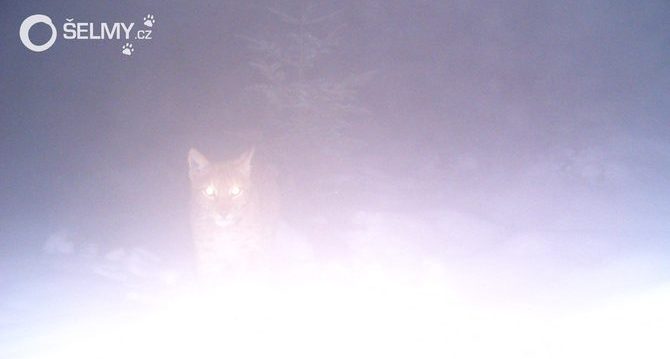
[The best image – it shows the lynx from the front, however, so the unique markings are not visible. The quality of the remaining photos was much worse.]
As the hare was by now all consumed, I moved the camera trap to a nearby rock – the lynx seemed to have passed near it on both previous visits. I hoped that the elusive animal would return once more and reveal its identity.
November 28th, 2017. I went to check a regular camera trap located about two kilometres from the place where I found the hare. I was hoping for an image of lynx captured around the date of the kill. It could help me answering the riddle of the mysterious lynx. Indeed, looking at the photos at home, I found a shot taken in the evening of November 16th – it showed the lynx beautifully from the right side. We must have been very close to each other that day in the mountains. The markings on lynx fur were clearly visible but unknown to me. A new, mature lynx appearing here out of the blue? Is it possible, we already have a photo of that same lynx from somewhere else? Armed with patience, I was awaiting more pictures of the enigmatic animal.
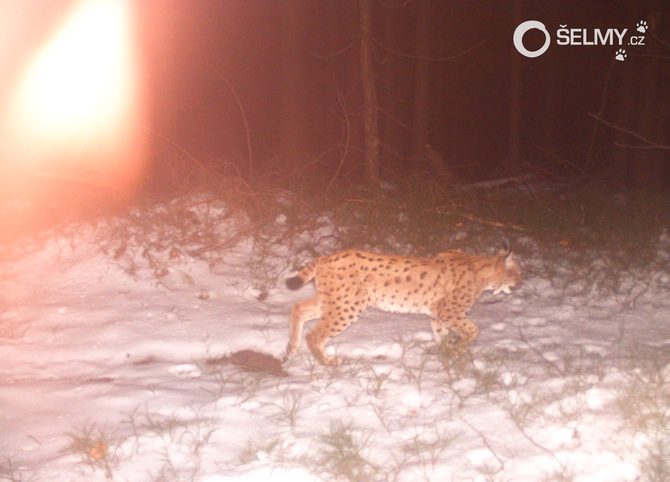
[Photos from the camera trap checked on 28 November. First clear image of as yet unknown lynx.]
I also decided to go through the older photos of lynx from the Beskydy Mountains. A lynx similar to my “phantom” was captured once before: in the summer of 2017 at the location some 11 kilometres as the crow flies from my regular camera trap. There was a catch, however; the photo showed the left side of the lynx body, while my lynx was photographed from the right – I could therefore only guess whether the animal was the same or not. The rendering of dark spots was very similar, but the lynx looked more slender. The animal might have put on some body mass in the interim months, though. The winter fur also optically adds some weight.
December 2017. These first findings were soon followed by further snowtracking and more camera trap images; gradually, I started to piece together the story of each lynx. At the beginning of December, I found a kill made by lynx in the Silesian Beskydy and I wanted to monitor it with a camera trap. It was noon, so I returned to my car and quickly drove to the Moravian-Silesian Beskydy with the plan to move one of the cameras from there to the fresh kill. About 800 meters from the rock where the trap was located, I found older lynx tracks which were soon joined by a fresh trail. Thus in one day, I was able to track two different lynx in two different geomorphological areas, the Silesian and Moravian-Silesian Beskydy Mountains. I can only hope a rare opportunity like this will happen to me once again. The more recent of two trails led me up to the ridge and eventually to the camera trap. I was very pleased the lynx passed through the location I selected and I had my fingers crossed for a clear image. Taking the camera trap with me, I followed the trail which led directly to the spot where, almost a month ago, I found the buried hare. I felt positive that the lynx I was tracking was indeed the successful hare hunter and with a bit of luck, I’d find its image on the memory card safely stored in my backpack. Once at home, my suspicion was confirmed: the lynx was captured from the right side again and without a doubt it was the animal photographed by my regular camera trap in November. It was almost certain, that the lynx hunting in the area was none of Draža’s offspring but a completely new animal.
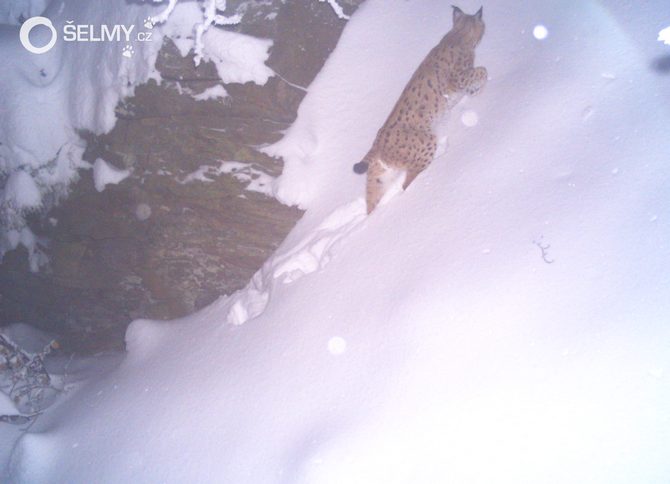
[Mysterious lynx photographed as it returned to the place where it killed a hare almost a month ago. Luckily, it chose the route passing the rock and the camera trap installed there.]
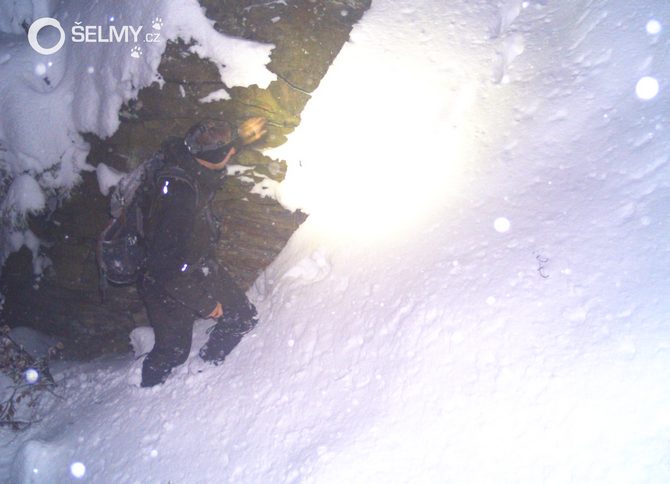
[Mere two days later, I’m piecing together its story.]
Now, I just needed to get a photo of the animal from the left side in order to either confirm or disprove that it was the lynx photographed in summer at a different location. I needn’t wait long: my colleague and Wolf Patrols member Tomáš Krajča shared an image of an unknown lynx photographed from left by a regular camera trap located some two kilometres from the place where I found the hare. Based on its side whiskers, body structure, and the markings, it seemed almost certain that this is my “phantom”. The photo also revealed that this was a different lynx than the one photographed in summer. The unique markings were not matching each other.
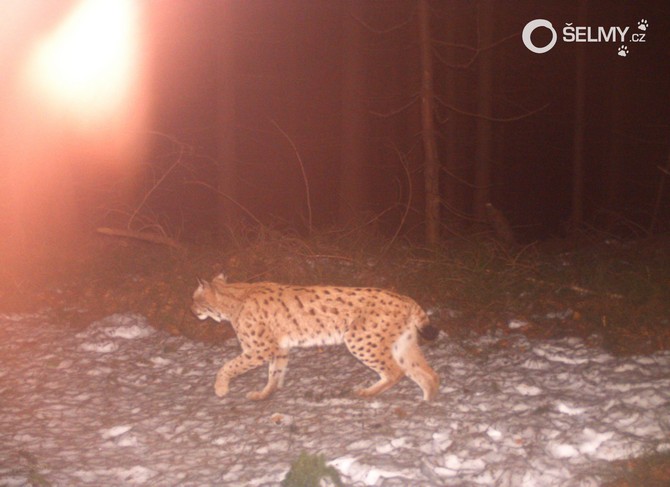
[The mysterious lynx finally showed its left side.]
Otmar. The new lynx did not disappear from the area once the winter was over. At the beginning of spring, a colleague Leona Kutalová found a killed roe deer. A camera trap that I installed at the kill site showed our lynx returning to finish the meal. As the spring progressed, our new friend got photographed at various other locations. Eventually, we were able to determine its sex and so the time came to choose its name. The name that falls to the 16 November – the date when the lynx was photographed for the very first time – in the Czech calendar is Otmar. In seven months, the lynx was recorded at seven different locations (in total 57 images and 6 videos). Leona and I were both following its trails many times and we found several samples suitable for DNA analysis. Most importantly, Otmar enriched the small and fragile lynx population in the Beskydy Protected Landscape Area. Moreover, he settled in the territory where the lynx was missing for several years. By camera trapping and snowtracking, we were so far able to describe the area used by the lynx which covers about 50 square kilometres; however, it is likely that Otmar's territory is significantly larger. One of our cameras captured not just Otmar but also another lynx, Draža’s offspring born in 2016, visiting the same spot during the mating season. If it were a female, it would give us hopes that the precarious lynx population in the northeastern corner of the Czech Republic might grow a bit stronger. We should find out over the following months.
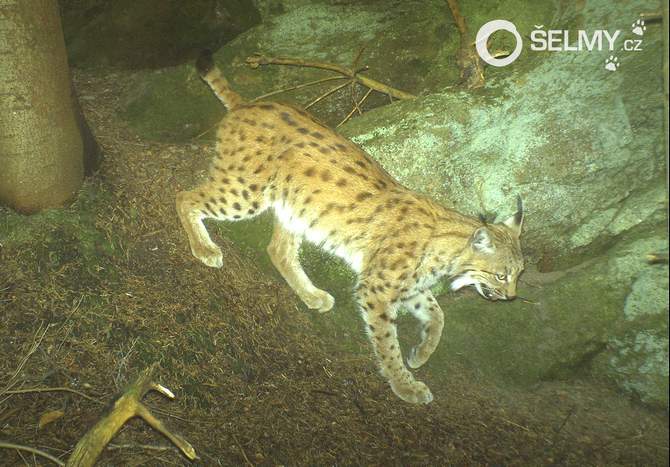
[The lynx already named Otmar in all its strength and beauty.]
The name Otmar means “rich and happy”, or “famous”. The way this lynx carries itself in front of the cameras, I get the impression that the name is most fitting. Its beautifully strongly built with powerful muscles on the shoulder blades. There is an abundance of prey in the area the lynx is occupying. We may only hope that it will continue to thrive and will be a happy and “rich” master of its new territory. Above all, we must wish Otmar luck when avoiding bullets from poachers and road traffic. I believe that he will yet give us chance to learn many interesting details from the life of lynx in the Beskydy Mountains.
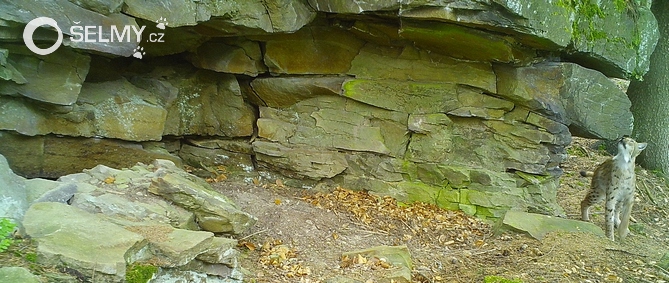
[May luck accompany Otmar in his new territory!]
